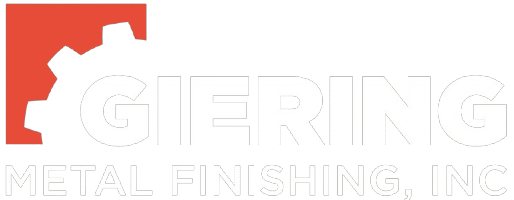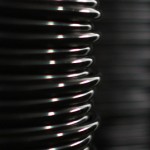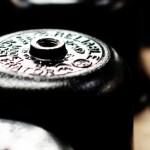- Electrocoat (ecoat) is an immersion plating process where we deposit organic finishes onto electrically conductive surfaces.
- We have (2) black cathodic epoxy electrocoat lines (PPG Powercron 6000CX series).
- We can produce one to millions of parts per order.
- Baths are approved for Military (MIL-DTL-53084 / MIL-P-53084), Automotive and many OEM applications. See our Specification Page for details.
What is electrocoating and why is it used?
Electrocoat (e-coat) is a wet paint finishing system that uses electrical current for paint deposition. E-coat is an immersion (dipping) process very similar to plating except we are depositing organic finishes, not metal. Working on the principle that opposites attract, an e-coat system applies an electrical charge to a metal part immersed in a bath of oppositely charged paint particles. Paint particles are composed of a thermoset resin bound with pigment suspended in water & other solvents. Electrocoating systems use electrically charged particles to coat a conductive part. As these particles are drawn to the metal part, they form an even, continuous, low-profile film over the surface until the desired film thickness is reached. Regulated by the amount of voltage applied, the deposition is self-limiting and slows down as the applied coating electrically insulates the part. The e-coat paint covers and protects the entire part or product so that even corners, edges and recessed areas are completely protected. Because e-coat is an immersion process, coaters are always concerned with trapping air in sealed corners or cupping solution in non-draining bases.
E-coat solids deposit initially in the areas closest to the counter electrode and, as these areas become insulated to current, solids are deposited in more recessed bare metal areas to provide complete coverage. This phenomenon is known as throwing power and is a critical aspect of the electrocoat process
Depending on the polarity of the charge, e-coating can be either anodic or cathodic:
Anodic e-coating:
In anodic e-coating, the part is the anode with a positive electrical charge. It attracts the negatively charged paint particles in the paint bath. Small amounts of metal ions migrate into the paint film, limiting the performance properties of these systems. Their primary use is for products for interior or moderate exterior environments.
Cathodic e-coating:
In cathodic systems, like those at Giering Metal Finishing, the product is negatively charged, which attracts the positively charged paint particles. This reversed polarity greatly reduces the amount of iron entering the cured paint film, enhancing the properties of the cathodic e-coated products. Cathodic coatings are high performance, thermoset coatings with excellent corrosion resistance and can be formulated for exterior durability (acrylic).
Our E-coat systems deposit thermoset epoxy resin bound with a lower-range, semi-gloss black pigment. Epoxy e-coat functions as an excellent primer to serve as a base-coat foundation for subsequent coatings.
Electrocoating is used on many products you own! In fact, today, approximately 99% of all new cars manufactured are electrocoated then top coated with the color of choice. Electrocoat primer is what protects your car from rusting and allows dealers to provide the extended warranties that were unheard of 20 years ago.
Environmental awareness is another reason many manufacturers use e-coat. The electrocoat process is environmentally friendly because it produces little or no HAPs (hazardous air pollutants), ultra-low VOCs (volatile organic compounds), and is RoHS, OSHA and EPA compliant. E-coat systems recycle too! Virtually all unused paint is recovered and put back into the system. At “clean-out” time, any waste that has accumulated in the bottom of the paint tank is disposed of easily and safely. Economics are another reason manufacturers choose electrocoating. Because most e-coat systems are automated, the amount of paint applied to a product can be precisely controlled, yielding minimal waste unlike powder or paint overspray. Also, many parts or products can be coated at once and run through an e-coat tank at high speed. E-coat makes products last longer. Manufacturers choose electrocoating to provide their products with a durable, lasting finish that will stand up to outdoor environments such as water and sunlight or indoor environments such as chemicals used in your laundry room.
Electrocoat is a technology used worldwide to achieve high-quality, low-cost finishes at a level of efficiency and environmental compliance no other finishing method approaches. The performance advantages, along with reduced finishing costs, have made it a growing technology that will continue long into the future as new uses and technologies are developed.
Products Finishing is our monthly industrial trade magazine (aka “bible”) of new technology, facts, updates, and sympathetic problem-solving tips for the finishing industry. Enjoy this article about electrocoating. E-coat can produce uniform finishes with excellent coverage and outstanding corrosion resistance.







